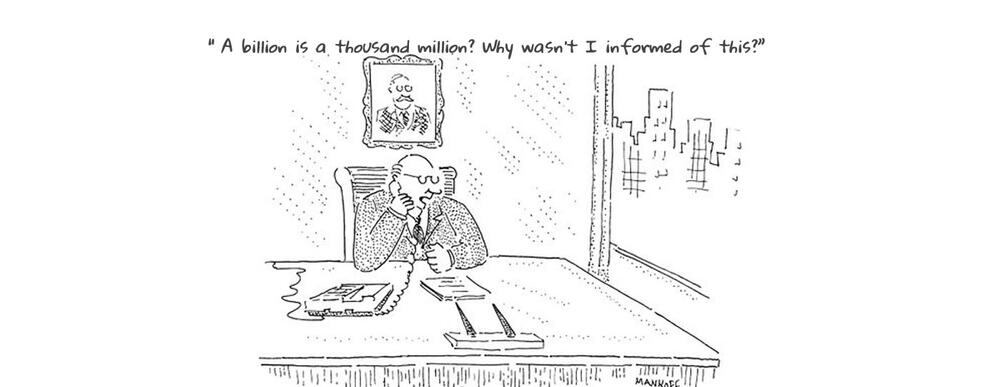Posted on Sep 02, 2023 |
In recognition of the unique characteristics of each country, including variations in units of measurement, decimal separators, and division methods, this article delves into a subject that often perplexes: the discrepancy in the meaning of a billion. It's important to note that a billion in an Anglo-Saxon nation like the United States does not hold the same numerical value as a billion in a Spanish-speaking country such as Guatemala. But why is this the case?
Their spelling and pronunciation are so similar that you often have to stop and think about the equivalence. But the billion in English-speaking countries equals 1,000 millions: a 1 followed by 9 zeros: 1,000,000,000. Meanwhile, the billions in Spanish are equivalent to a million million, that is, a 1 followed by 12 zeros: 1,000,000,000,000.
Due to the globalization of communication and the North American influence of the economy (which is very important), the term trillion followed by 9 zeros is understood, but an American would not understand this difference if he heard the trillion in a Spanish-speaking country, including Spain. In fact... a language translator (like Google translate) will translate the term "billion" in Spanish to "trillion" in English. The difference lies in the long number scale and the short scale.

In reality, figures like billions, trillions, or quadrillions represent vast quantities that seldom arise in our everyday experiences, particularly in the case of trillions and quadrillions. These astronomical numbers are far more common in discussions related to macroeconomics, such as a nation's debt or its GDP, or when assessing the value of colossal entities like Amazon. In scientific contexts, they come into play when measuring the distance between stars and in technology discussions regarding the storage capacity of hard drives, typically quantified in megabytes.
Long numerical scale
The long numerical scale, alternatively referred to as the European numerical scale, finds primary usage in continental European nations and countries where Spanish or Portuguese serves as the official language, with the exception of Brazil and Puerto Rico.
We are going to observe how we would call each group of figures according to this scale:
- 1= one
- 1 000= a thousand
- 1,000,000= a million
- 1,000,000,000= a thousand millions (“mil millones”as said in Spanish)
- 1,000,000,000,000 = European/Spanish Speaking Billion (which is equivalent to one million millions)
- 1,000,000,000,000,000 = one thousand billions (“mil billones”as said in Spanish, or a thousand billions)
- 1 000 000 000 000 000 000 = a trillion
Short number scale
This signifies that the transition between figures, such as moving from millions to billions and trillions, occurs at intervals of 1,000 units in the long numerical scale. In contrast, the short numerical scale, also known as the Anglo-Saxon numerical scale, is employed in Brazil and the majority of countries where English serves as the official language
Therefore, each group of figures is called as follows:
- 1= one
- 1 000= thousand
- 1,000,000= million
- 1,000,000,000= American billion (which equals one thousand millions)
- 1,000,000,000,000 = trillion
- 1,000,000,000,000,000 = quadrillion
- 1 000 000 000 000 000 000 = quintillion
To sum it up, it's crucial to remember that in Spanish, the term "billion" denotes one million million (represented as a 1 followed by 12 zeros: 1,000,000,000,000), whereas in English, a "billion" corresponds to a thousand million (expressed as a 1 followed by 9 zeros: 1,000,000,000). Therefore, when discussing figures in both languages, conversion becomes necessary.

Latest Posts
-
Easter Week 2025 Schedule Processions Antigua Guatemala
- Mar 02, 2025 -
Ten Beautiful Words in the Spanish Language
- Jul 13, 2024 -
Easter Week 2024 in Antigua Guatemala
- Feb 04, 2024




